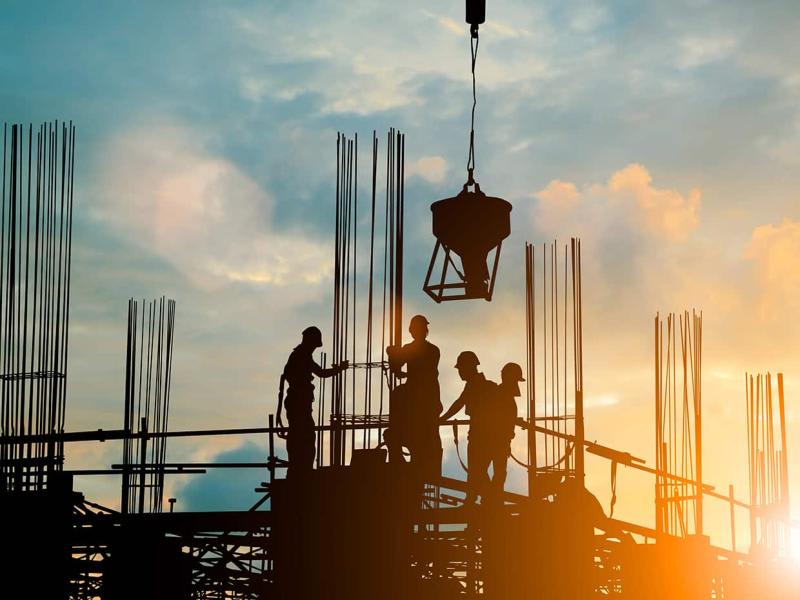Key takeaways
A profound shift is underway in the dynamic landscape of the Asia Pacific region’s (APAC) real estate sector. Climate change and sustainability have emerged as formidable catalysts, reshaping the way developers, builders, and investors approach their roles. As economies worldwide converge on the 2050 net-zero agenda, the region is experiencing some pioneering initiatives. From green building regulations to evolving buyer preferences and financial sector involvement, the forces of change are palpable. Yet, the path to sustainable real estate is paved with challenges that are disrupting a smooth transition to environmentally focused initiatives for the region. RSM’s real estate specialists share their insights on how the global demand for sustainable practices is shaping the sector.
Code green: the need for sustainability
According to a report by the United Nations Environment Programme, the energy demand for buildings globally has increased by 4%, the most significant increase in ten years. In addition, CO2 emissions have skyrocketed to an all-time high, rising by 5% from 2020 and 2% from the previous peak in 2019.
It is no secret that environmental sustainability is an issue that requires immediate action. Around the world, stakeholders, investors, governments, and more are demanding that organisations adhere to more sustainable practices to promote an environmentally stable future. The real estate and construction sectors have also found their place in this demand, with a growing push towards sustainable residential, industrial, and commercial developments. As Kengo Maekawa, Founder and CEO of RSM Shiodome Partners, shares, “The prevailing concern about climate change and its effects has heightened awareness of environmental issues both domestically and globally. This has prompted a shift to more sustainable lifestyles and a growing need for housing that is in line with new values.”
According to Dennis Lee, Partner at RSM Singapore, “Buildings contribute to over 20% of our nation’s carbon emissions.” He adds, “The push to ‘Going Green’ still has some way to go in Singapore. There are many factors driving demand in this area. Globally, there are national targets to arrest climate change by 2050. In Singapore, our 2030 Green plan involves a commitment to liveable and sustainable homes alongside other national commitments regarding transportation, waste management and carbon neutrality in certain segments.”
According to an RSM survey of property and construction leaders in 2022, 90% of Australian CEOs have ‘some level of concern’ about a lack of sustainable initiatives in construction. “Despite this sentiment,” says Adam Crowley, National Leader for Property and Construction at RSM Australia, “the demand for sustainable properties has significantly risen.” This is furthered by a recent report conducted by The Commonwealth Scientific and Industrial Research Organisation (CSIRO), which indicated that “two-thirds of home buyers prefer energy efficient homes when given a choice.”
The need for sustainable real estate is obvious and matched by the demand. So, what is happening to make the change?
Real estate’s green transition: the actions and challenges
The growing need for sustainable real estate has not gone unheeded, with multiple pushes towards sustainability in real estate markets across APAC. As mentioned previously, the Singaporean government has a 2030 Green Plan. As part of their plan, “The Ministry of National Development and other government agencies are taking a concerted approach towards achieving an ambitious target to have 80% of all buildings ‘green’ by 2030,” says Keith Tan, Business Consulting Director at RSM Singapore. “This will have a knock-on effect on new build designs, engineering and construction techniques and ultimately asset pricing. We believe that the push to decarbonisation will increase property value in the long run.”
This is not all, however. As Lee states, “The real estate industry in Singapore is also making strides in enhancing green measures to combat climate change. Some of the drivers for this are tightening government regulations on green procurement, project incentives for green developments, promoting the Building Green Mark Certification, which identifies eco-friendly projects, significant future carbon tax hikes and wider adoption of green financing schemes for developers and builders that take into account emissions and climate change.” Tan continues, saying that “Singapore’s regulators have also embedded guidelines in the governance code and listing rules to address climate change and sustainability reporting disclosure based on TCFD [Task Force on Climate Related Financial Disclosures] and SASB [Sustainability Accounting Standards Board]. There are also plans to adopt ISSB [International Sustainability Standards Board] in good time as the new integrated sustainability reporting standard.”
In Japan, the government is similarly putting measures in place to encourage sustainable buildings and building practices. Maekawa says, “Government policies and regulations fuel the demand for sustainable housing, with incentives such as subsidies for energy-efficient homes encouraging environmentally friendly building practices.” A prominent initiative taken by the Japanese government is the Zero Net Energy Houses (ZEH) initiative. ZEHs are designed to reduce carbon emissions and promote the use of renewable energy sources, by creating as much energy as possible through renewables on-site. This initiative aims to have ZEHs as the standard for housing construction by 2030. Complimentary to this, as Maekawa says, “Sustainable properties have the added attraction of cost savings through improved energy efficiency. This means that buyers are attracted by the potential for long-term cost savings, such as solar panels and improved insulation, thus further driving demand.”
The benefits of sustainable housing are nothing to sneeze at and could be a prime selling point for many buyers. According to that same report conducted by RSM Australia, floor plans with additional ‘sustainability’ features have an 8.6%-higher purchase preference over the standard version of the same design. “We also expect to see a growing emphasis on sustainable practices,” says Crowley, “with many projects seeking Green Star Ratings or aiming to achieve Leadership in Energy and Environmental Design (LEED) certification.”
However, despite the demand, the need, and the actions being taken to transition to sustainable housing, there are still challenges in the way. As Crowley states, “The pandemic, extreme weather conditions, supply and labour shortages, not to mention high interest rates and increasing inflation, have all put extreme pressure on the Australian construction industry. This has negatively impacted the country’s transition to sustainable housing, which would have delivered more than half a billion dollars of additional investment in the construction industry by 2030 and created 7,000 new jobs.”
Advice for real estate professionals
There are many ways that real estate professionals can tap into this growing market. “Companies in the real estate industry will need to offer sustainable housing options and educate buyers about the benefits of eco-friendly living”, says Maekawa. “They can also explore opportunities in this growing market by utilising government support and adapting their marketing strategies to highlight sustainability features.”
Professionals can also use their proximity to the markets to adapt their strategies: “They have a closer relationship to the real-world buying behaviour of prospective homeowners and should take a features-based approach to marketing sustainable properties, highlighting amenities, investment returns, market capitalisation and savings”, says Crowley.
Lee adds, “We find that real estate professionals, be they in consultancy, development or built environments, will need to realise that the bar for understanding and applying climate change practices and trends in their activities and services will be raised. They can tap into industry road maps and available sector standards to get a sense of the common themes in their respective real estate segments that need to be explored, including considerations of the wider risks and opportunities.”
In Singapore specifically, “Companies looking to acquire properties for use or as investment grade assets, have specific rules which take into account Loan-To-Value and stringent leverage ratios”, says Tan. “Our local Big Three Banking Institutions have also established green targets in respect of the real estate sector, in a bid to do their part towards reducing their carbon footprint, promote sustainable financing and ultimately indirectly influence real estate players to change mindset and promote projects which meet more stringent ‘Green’ criteria.”
The takeaway
In Asia Pacific’s constantly evolving real estate market, adaptability is crucial for professionals to remain competitive. The current surge in demand for sustainable real estate signals a fundamental shift in industry dynamics; sustainability is not a fleeting trend but a potential cornerstone that could shape the future of real estate.
The growing emphasis on sustainable development reflects an urgent need for responsible practices. Looking ahead, the future holds the promise of a greener real estate landscape. Professionals should foster this momentum, recognising that embracing sustainability is not just keeping pace but leading the way toward a more sustainable future for the industry.
If you would like to read more insights or get in touch for more information, please visit our Real estate and construction page.








